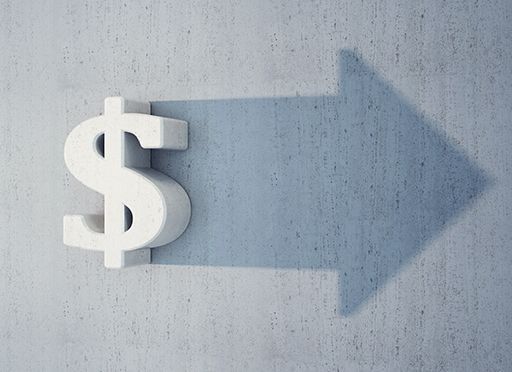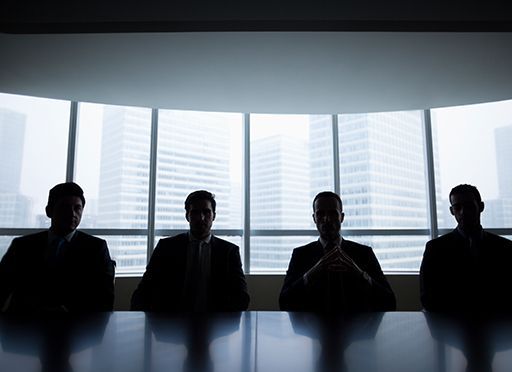Theranos founder and fraudster Elizabeth Holmes raised millions to sell her tiny blood-testing machine.

How Theranos Bled Out
Elizabeth Holmes wanted to be a billionaire.
Theranos founder Elizabeth Holmes announced that she wanted to become a billionaire when she was only nine. Pulitzer Prize winning, Wall Street Journal investigative reporter John Carreyrou uses this story to indicate her ambition.
After graduating from Stanford, Holmes opened a company she named Theranos, combining “therapy” and “diagnosis.” A CEO at age 19, she said her firm’s new blood testing device would draw blood, test it and release the right dose of medicine. On that promise, she raised almost $16 million.
Dismissing dissent
In November 2016, Holmes, 22, demonstrated her blood-testing system to pharma giant Novartis – only she didn’t really. Instead, she transmitted fake test results and called the demo a grand success. Oracle’s Larry Ellison and his mentor, Theranos board chair Donald L. Lucas, both invested. Pharma companies intended to place Theranos devices in the homes of people in drug trials, but even as they made plans, Theranos co-founder Shaunak Roy knew its device often failed.
Henry, you’re not a team player. I think you should leave right now.Elizabeth Holmes to CFO Henry Mosley
Flush with $32 million in funding and pending contracts worth $300-million, Theranos seemed poised to hit $1.5 billion in earnings. But when CFO Henry Mosley told Holmes she had to stop misleading investors and clients, she fired him.
Just a drop
The Theranos 1.0 was supposed to run complex blood tests using one drop of blood. The test-input device looked like a thick credit card. A patient pricked a finger, placed a drop of blood on the card, and used a “transfer pen” to pick up the drop and put it in the cartridge. Most people had to prick their fingers repeatedly. Once the card was filled, it went into the Theranos reader, where internal pumps ran the blood through filters, splitting white and red blood cells from plasma. The reader’s antibodies that reacted to the plasma, and it read the reaction to get a test result.
Holmes wanted the device to work for home blood monitoring, but the late 2015 prototype – the Theranos 1.0 – was still a dysfunctional manifestation of her fantasies about a device. She insisted on making everything as small as possible, so the blood sample was so tiny patients had to dilute it with saline to increase its volume.
The card’s tiny valves operated in sequence. Blood had to flow through its channels and not leak internally. Holmes called the new prototype “The Edison.” She gave her Board rising income projections based on pending pharma deals, but the money never came. Holmes kept giving different reasons the Edison wasn’t ready. After 15 months, Pfizer dropped Theranos due to inconsistent test results.
The boyfriend vice chairman
Carreyrou introduces one of this strange tale’s stranger, more intriguing characters: intrusive Ramesh “Sunny” Balwani, Holmes live-in boyfriend and executive vice chair. Balwani had made $40-plus million dollars before the dot-com bubble burst. Whenever Holmes left her office, he followed her, though she swore their relationship was just business.
It made for an unnerving work environment. A colleague might be there one day and gone the next, and you had no idea why.John Carreyrou
In 2009 and 2010, Balwani became the Theranos “hatchet man.” When an engineer he harassed resigned, Balwani told police the man had stolen company property “in his mind.” Carreyrou presents this as an early example of Balwani’s increasing extreme security ideas.
The dime store deal
In 2010, Theranos approached Walgreens about putting the latest iteration of its device, the Edison, in blood testing centers in 30 to 90 of its stores by mid-2011. Theranos claimed Edison could do 192 blood tests; the real number was less than half that. Holmes wouldn’t allow a comparative blood test using the Edison, but Walgreens CFO Wade Miquelon made the deal to put the machines in his stores.
Walgreens’ executives had their fingers pricked for blood testing, but had no results a month later. An employee warned Kermit Crawford, head of Walgreens pharmacy, not to go forward. He persisted, saying he couldn’t chance Theranos being legit and making a deal with rival pharmacy chain CVS. This is a continuing theme: executives weren’t sure Holmes was honest, but they couldn’t risk letting a rival find out that she was.
Theranos also pursued Safeway, a supermarket chain led by CEO Steve Burd. It lent Theranos $30 million and eventually spent $100 million-plus building in-store wellness centers. Both Walgreens and Safeway were displeased that Holmes didn’t deal exclusively with them.
Holmes desperately sought a device that could back up her lies. She brought in a new team to build a “miniLab,” including a spectrophotometer, a cytometer and an isothermal amplifier in addition to the Edison’s photomultiplier tube.
No significant revenues would materialize, unless Theranos proved to each partner that its blood system worked.John Carreyrou
At Safeway, Holmes dealt only with Burd. Theranos’s delay meant Safeway couldn’t make its financial projections, so its executives got no bonuses. In January 2013, Burd retired, having lost his company’s trust due to Theranos. Safeway stayed with Theranos to block its competitors.
Maximum problems with the miniLab
After two years of work, the miniLab still wasn’t ready in 2013. Theranos marginalized or fired employees who voiced concerns and promoted those who praised the miniLab, though it could process only one kind of test at a time.
(Elizabeth Holmes) clearly didn’t want to hear anything that contradicted her point of view.John Carreyrou
Theranos tried “stacking” six miniLabs in one device, but that made the operating temperatures too hot. Theranos missed its February 1, 2013 Walgreens launch deadline, though Walgreens had paid a $100 million innovation fee and lent Theranos $40 million. With the Safeway deal “falling apart,” Holmes pushed to get devices into Walgreens by September 2013.
Chemist Anjali Laghari, head of Theranos’s immunoassay group, believed launching too early raised ethical and health issues. She resigned. Enraged, Holmes and Balwani called an employee meeting where Balwani said Holmes was building a religion and nonbelievers should resign.
“Misleading claims”
On September 7, 2013, The Wall Street Journal published an interview lauding Holmes as a young entrepreneur. Though she repeated her “misleading claims,” the publicity supported her fundraising. Carreyrou is unstinting in revealing the credulity of his own newspaper.
New investors included Partner Fund Management, a San Francisco–based $4 billion hedge fund. Holmes showed its leaders a chart with false results and touted her impressive Board members. Balwani made up numbers projecting profits of $165 million for 2014 and $1 billion in 2015. Partner paid $96 million dollars for Theranos shares, bringing its valuation to $9 billion. Holmes’s shares were now worth almost $5 billion.
The turncoat
In 2011, Holmes hired Tyler Shultz, grandson of Theranos board member George Shultz, former US Secretary of State, to test blood samples for syphilis. In two rounds, the Edison was right 65% and then 80% of the time. Theranos claimed 95% accuracy.
The first thing that dampened [Tyler Shultz’s] enthusiasm for working at Theranos was seeing the inside of an Edison.John Carreyrou
The Edisons kept failing quality control tests, as Balwani knew, but he still ordered lab workers to test patients’ blood. Tyler told Holmes his concerns about inaccurate tests. She denied that Theranos violated its accuracy claims.
Tyler filed an anonymous complaint with New York State. He went to his grandfather and wrote to Holmes about his concerns. Balwani responded with a vicious attack. Holmes convinced George Shultz that Tyler didn’t know what he was talking about.
The specter of fraud
In March 2017, the Partner Fund’s lawyers deposed Tyler Shultz. Ultimately, Theranos settled Partner’s lawsuit for $45 million. Low on money, Theranos cut staff. The SEC charged Holmes, Balwani and Theranos with fraud. To address civil charges, Holmes had to give up corporate control and pay a $500,000 fine. She remained under criminal investigation for deceiving investors and federal officials. Carreyrou’s saga ends with Theranos’s collapse, leaving readers wondering what happened next. [In January 2023, Holmes was sentenced to 11 years in jail for fraud.]
Lies, half lies and fraud
The tale of Theranos’s rise and fall is inconceivably complex, arising not from a grand strategy, but from incremental fraud and hubristic bullying. Understanding Holmes’ machinations would require burrowing deeply into her actions, but Carreyrou wisely never plays armchair psychologist or tries to explain her motives. He depicts the facts and lets you draw conclusions. Some details may not seem all that crucial; the author could have cut back and still painted a clear portrait of Holmes, Balwani and their victims. Still, this remains a compelling, and compellingly written, true-crime story.












